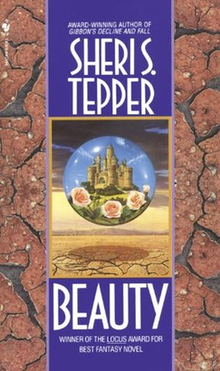
Fantasy films are films that belong to the fantasy genre with fantastic themes, usually magic, supernatural events, mythology, folklore, or exotic fantasy worlds. The genre is considered a form of speculative fiction alongside science fiction films and horror films, although the genres do overlap. Fantasy films often have an element of magic, myth, wonder, escapism, and the extraordinary.

"Sleeping Beauty", also titled in English as The Sleeping Beauty in the Woods, is a fairy tale about a princess cursed by an evil fairy to sleep for a hundred years before being awakened by a handsome prince. A good fairy, knowing the princess would be frightened if alone when she wakes, uses her wand to put every living person and animal in the palace and forest asleep, to awaken when the princess does.

A Simple Wish is a 1997 American children's-fantasy-comedy film directed by Michael Ritchie, and starring Martin Short, Mara Wilson, and Kathleen Turner. The film is about a bumbling male fairy godmother named Murray (Short), who tries to prove himself capable by helping a young girl named Annabel (Wilson) fulfill her wish that her father, an aspiring actor, wins the leading role in a Broadway musical.

In fairy tales, a fairy godmother is a fairy with magical powers who acts as a mentor or parent to someone, in the role that an actual godparent was expected to play in many societies. In Perrault's Cinderella, he concludes the tale with the moral that no personal advantages will suffice without proper connections.
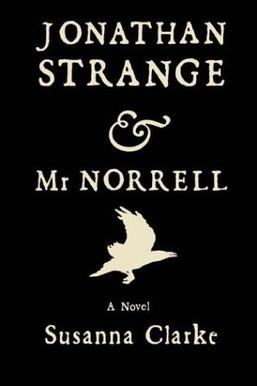
Jonathan Strange & Mr Norrell is the debut novel by British writer Susanna Clarke. Published in 2004, it is an alternative history set in 19th-century England around the time of the Napoleonic Wars. Its premise is that magic once existed in England and has returned with two men: Gilbert Norrell and Jonathan Strange. Centred on the relationship between these two men, the novel investigates the nature of "Englishness" and the boundaries between reason and unreason, Anglo-Saxon and Anglo-Dane, and Northern and Southern English cultural tropes/stereotypes. It has been described as a fantasy novel, an alternative history, and a historical novel. It inverts the Industrial Revolution conception of the North–South divide in England: in this book the North is romantic and magical, rather than rational and concrete.

Robin McKinley is an American author best known for her fantasy novels and fairy tale retellings. Her 1984 novel The Hero and the Crown won the Newbery Medal as the year's best new American children's book. In 2022, the Science Fiction and Fantasy Writers Association named her the 39th Damon Knight Memorial Grand Master in recognition of her significant contributions to the literature of science fiction and fantasy.

The Pentamerone, subtitled Lo cunto de li cunti, is a seventeenth-century Neapolitan fairy tale collection by Italian poet and courtier Giambattista Basile.
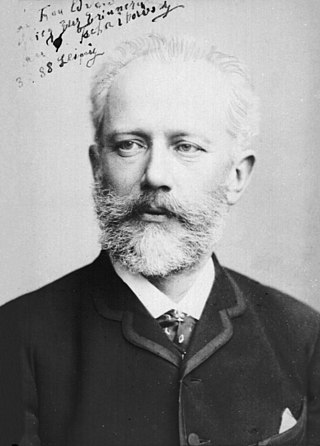
The Sleeping Beauty is a ballet in a prologue and three acts to music by Pyotr Ilyich Tchaikovsky, his Opus 66, completed in 1889. It is the second of his three ballets and, at 160 minutes, his second-longest work in any genre. The original scenario was by Ivan Vsevolozhsky after Perrault's La belle au bois dormant, or The Beauty Sleeping in the Forest; the first choreographer was Marius Petipa. The premiere took place at the Mariinsky Theatre in St. Petersburg on January 15, 1890, and from that year forward The Sleeping Beauty has remained one of the most famous of all ballets.
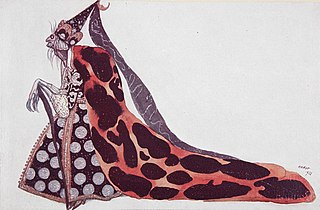
The Wicked fairy is the antagonist of Sleeping Beauty. In some adaptations, she is known as Carabosse. The most notable adaptation of the character is Maleficent, a Disney villain who appeared in various Disney media, beginning with the 1959 Walt Disney film Sleeping Beauty.

Briar Rose is a young adult novel written by American author Jane Yolen, published in 1992. Incorporating elements of Sleeping Beauty, it was published as part of the Fairy Tale Series of novels compiled by Terri Windling. The novel won the annual Mythopoeic Fantasy Award for Adult Literature in 1993. It was also nominated for the Nebula Award for Best Novel.

Fantasy is a genre of speculative fiction involving magical elements, typically set in a fantasy world and usually inspired by mythology or folklore. The term "fantasy" can also be used to describe a "work of this genre", usually literary.

Sleeping Beauty is a 1987 American/Israeli fantasy film, part of the 1980 film series Cannon Movie Tales. It is directed by David Irving and stars Tahnee Welch, Morgan Fairchild, Nicholas Clay and Sylvia Miles. It is a contemporary version of the classic tale of Sleeping Beauty of the Brothers Grimm and Charles Perrault. Like the other Cannon Movie Tales, the film was filmed entirely in Israel.

Beauty and the Beast is a 2009 Australian fantasy film directed by David Lister and starring Estella Warren, Rhett Giles, and Victor Parascos, and loosely based upon the fairy tale of the same name. The film was released in 2009 on video under that title and aired in 2010 on Syfy television as Beauty and the Beasts: A Dark Tale.
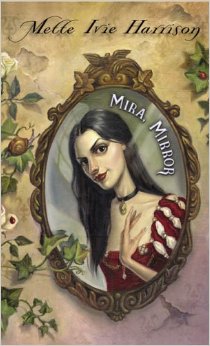
Mira, Mirror is a 2004 young adult fantasy novel written by Mette Ivie Harrison. The story of the novel is told from the viewpoint of the magic mirror from the fairy tale "Snow White". "Mira" is a main character.

The Changeling is a 2017 fantasy horror novel by Victor LaValle. The novel received critical acclaim, winnings awards including the 2017 Dragon Award for Best Horror Novel, 2018 August Derleth Award, 2018 Locus Award for Best Horror Novel, and 2018 World Fantasy Award—Novel. The novel was adapted into a television show of the same name which premiered in 2023.

The Changeling Sea is a fantasy novel for juvenile readers by Patricia A. McKillip. It was first published in hardcover by Atheneum/Macmillan in October 1988, with a paperback edition issued by Del Rey/Ballantine in December 1989. It was subsequently reissued in paperback and ebook by Firebird/Penguin in April 2003. The first British edition was published in hardcover by Oxford University Press in September 1991, with an ebook edition following from Gateway/Orion in December 2015.
The Witch is a 1906 French short silent film by Georges Méliès. The film is named for a witch, Carabosse, who tells a poor troubadour that he is destined to rescue a damsel in distress, but demands a high price for a magic charm to help the troubadour in his quest. When the troubadour cheats the witch to obtain the magic charm, she sets out in pursuit of him, and puts various obstacles in his way before finally being vanquished by forces of good.

The Hum and the Shiver is an urban fantasy novel by American writer Alex Bledsoe, first published in the United States in September 2011 by Tor Books. It is the first in a series of six books by Bledsoe about the Tufa living in a remote Appalachian valley in East Tennessee. The Tufa are descendants of Irish fairies and were found in the area when the first European settlers arrived.

The Magic Fish is a semi-autobiographical graphic novel written and illustrated by Trung Le Nguyen. The novel tells the story of Tiến Phong, a second generation American Vietnamese teenager, who helps his mother learn English through fairy tales while struggling to tell her about his sexuality.

Fairy Tale is a dark fantasy novel by American author Stephen King, published on September 6, 2022, by Scribner. The novel follows Charlie Reade, a 17-year-old who inherits keys to a hidden, otherworldly realm, and finds himself leading the battle between forces of good and evil.
